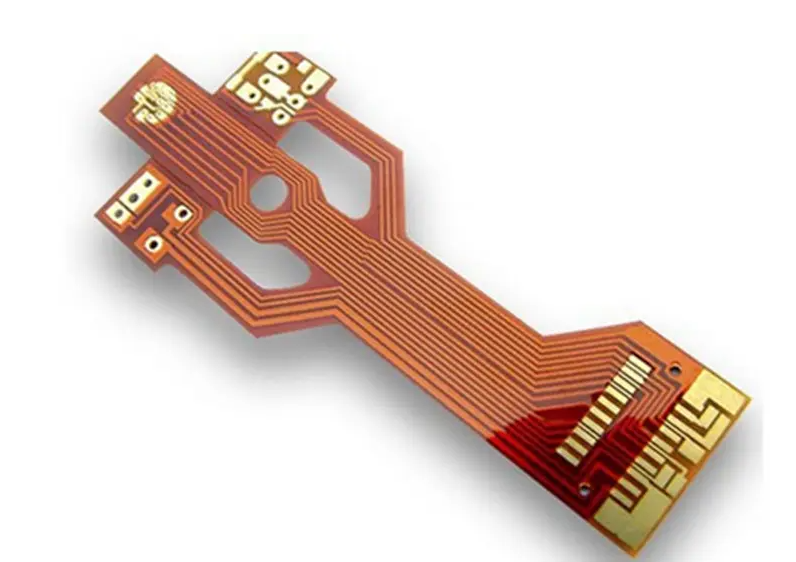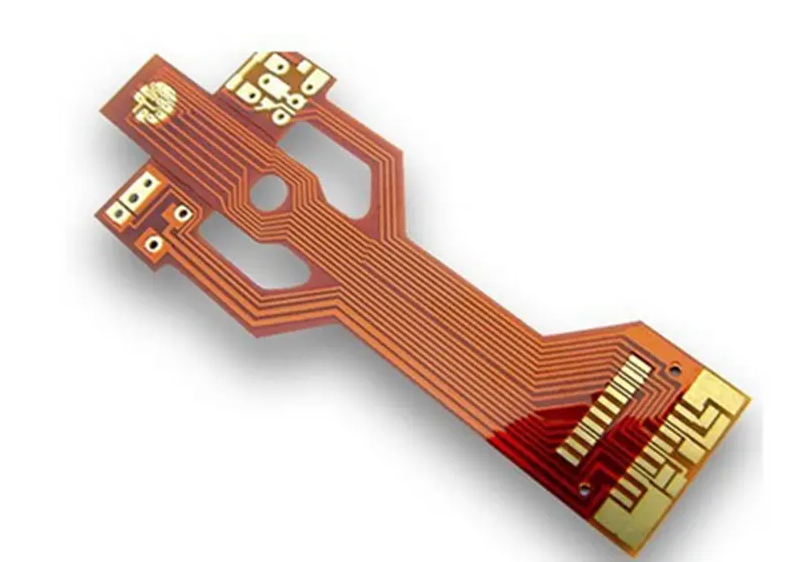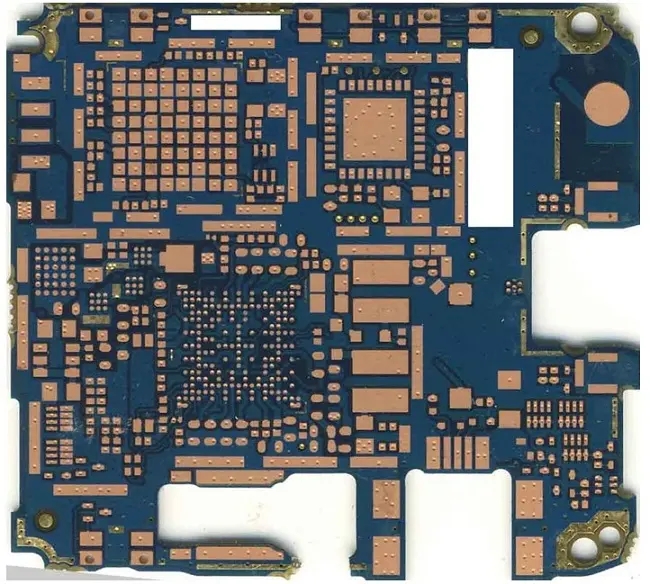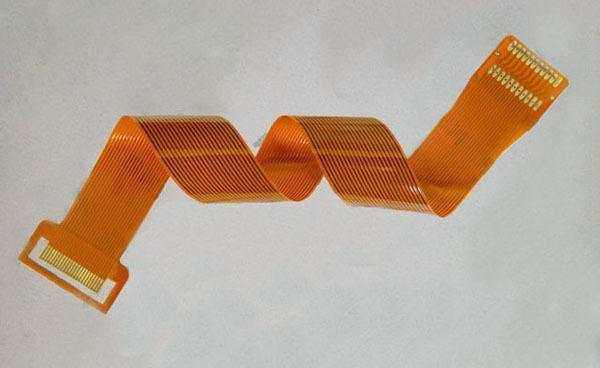
Flexible circuit board
Flexible circuit board is also known as flexible circuit board ", referred to as "soft board", commonly known as FPC in the industry, this kind of circuit board is mainly made of flexible insulating substrate (mainly polyimide or polyester film), has many advantages of hard printed circuit board does not have. For example, it can bend, coil and fold freely. The use of FPC can greatly reduce the volume of electronic products, suitable for electronic products to high-density, miniaturization, high reliability direction development needs. Therefore, FPC has been widely used in aerospace, military, mobile communications, laptops, computer peripherals, PDAs, digital cameras and other fields or products.
FPC also has the advantages of good heat dissipation and weldability, easy to install and connect, and low comprehensive cost.
Flexible printed circuit board classification has single side, double side, multi - layer board and rigid flexible board four. The base material used is mainly polyimide copper clad plate. This material has high heat resistance, good dimensional stability, and has both mechanical protection and good electrical insulation performance of the covering film through pressing into the final product. The surface and inner conductors of double-sided and multilayer printed circuit boards are metallized to realize the electrical connection of the inner and outer circuits.
The functions of the flexible circuit board can be distinguished into four kinds, respectively for the lead line, printing circuit, connector and multifunctional integration system, the use of covering the computer, computer peripheral auxiliary system, consumer livelihood electrical appliances and automobiles and other areas
Composition material
Flexible printed circuit boards are mainly composed of five parts:
Substrate: The commonly used material is polyimide (PI).
Copper foil: divided into electrolytic copper and calendered copper two.
Follow-up agent: generally 0.5mil epoxy resin thermosetting adhesive.
Protective film: used for surface insulation. The commonly used material is polyimide (PI).
Reinforcement: strengthen the mechanical strength of flexible printed circuit board.
Brief introduction to the classification of flexible circuit boards
At present, there are four kinds of FPC: single-sided, double-sided, multi-layer flexible plate and rigid flexible plate.
One sided flexible plate
Single - sided flexible board is the lowest cost, when the electrical performance requirements are not high. In a single side wiring, should choose a single side of flexible board. It has a chemically etched conductive pattern, and the conductive pattern layer on the flexible insulating substrate is calendered copper foil. Insulating substrates may be polyimide, polyethylene terephthalate, arylamide fiber esters and polyvinyl chloride.
Double-sided flexible plate
The two-sided flexible plate is a conductive pattern made by etching a layer on each side of the insulating base film. The metallized hole connects the pattern on both sides of the insulating material to form a conductive path to meet the flexural design and use function. The covering film protects single - and double-sided wires and indicates the placement of components.
Multilayer flexible plate
Multi-layer flexible plate is to layer more than three layers of single-side or double-side flexible circuits together, through drilling, plating to form metallized holes, forming conductive pathways between different layers. In this way, there is no need to use complex welding process. Multilayer circuits have great functional differences in terms of higher reliability, better thermal conductivity and easier assembly performance. The interaction of assembly size, number of layers and flexibility should be taken into account when designing the layout.

Traditional rigid flexible plate
Traditional rigid and flexible plates are composed of rigid and flexible substrates pressed together in selective formations. The structure is tight, forming conductive connections with metallized holes. If a printed board has both front and back components, rigid flexible boards are a good choice. But if all the components are on one side, it is more economical to choose a double-sided flexible plate and layer the FR4 reinforcement material on the back.
Flexible circuits of hybrid construction
The flexible circuit of hybrid structure is a kind of multilayer board, the conductive layer is composed of different metals. An 8-layer board uses FR-4 as the inner medium and polyimide as the outer medium, with leads protruding from three different directions of the board, each made of a different metal. Copper alloy, copper and gold are used as independent leads. This kind of hybrid structure is mostly used in the low temperature situation where the relationship between electrical signal conversion and heat conversion and the electrical properties are harsh, and it is the only feasible solution. It can be evaluated by the convenience and total cost of interlinking design to achieve the best performance price ratio.
Advantages and Disadvantages of flexible circuit Board
Advantages of flexible circuit board
Good flexibility, free bending, folding, winding, can be moved and expanded in three dimensional space
Good heat dissipation performance, can be used to reduce the volume of F-PC
Realize lightweight, miniaturization, thin, so as to achieve the integration of component device and wire connection
Disadvantages of flexible circuit board
The process design is more complex and difficult, the customer product structure is varied, the requirements are not the same, can not achieve a stable process
Low possibility of rework, especially in pressing, etching, electroplating, etc
The inspection is difficult, the line is fine, the hole copper and so on brings the detection inconvenience
Can not carry a single heavy items
Soft plate is thin, easy to produce wrinkles, crimping, crushing, etc
The cost of products is higher, mainly by importing raw materials from Japan, the United States, Taiwan and other places







